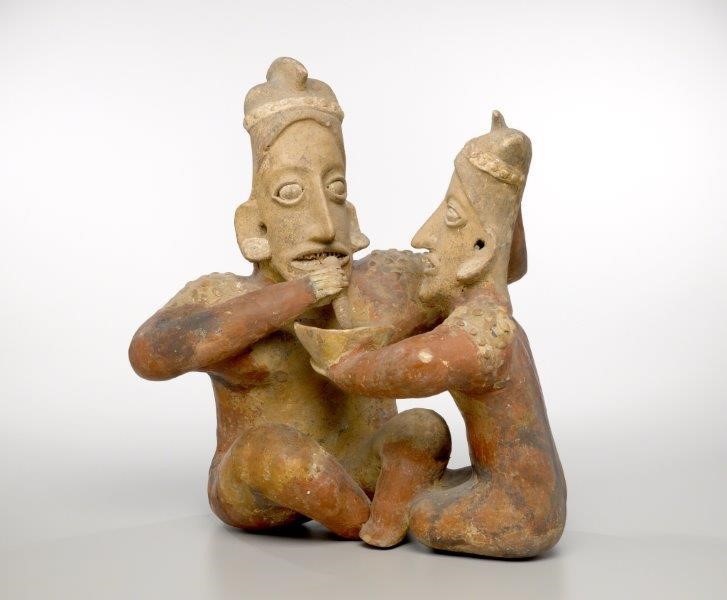Happy National Romance Awareness Month: Jalisco Culture, Ancient Mexico
National Romance Awareness Month? Who even knew this existed? Karl, our Art Historian extraordinaire, that’s who! This month, he’ll be featuring some pretty cool art to celebrate. While this is an unusual national month category, it is a nice intent: to do some little romantic thing for a loving mate during a whole month rather than just on Valentine’s Day. Can’t think of any more romantic gesture than commemorating a meal with your beloved in clay for inclusion in your tomb! You can imagine this wife (on right) saying “Eat, eat!” for eternity.

Jalisco, along with Colima and Nayarit, are present-day states in Western Mexico bordering the Pacific Ocean. This region contained numerous sophisticated, ancient cultures that flourished at the same time as the Mayan, Teotihuacán, and the Veracruz cultures. Chichimec, Tarasca, Jalisco, Nayarit, and Colima were some of the major native cultures.
Nomadic cultural groups are thought to have migrated to this region of Mexico between 8,000 and 10,000 years ago. Simple settlements emerged on lakeshores and rivers between 1800 and 1500 bce. The earliest pre-Hispanic Jalisco culture was centered in Ixtépete. This site was characterized by shaft tombs and pyramid platforms. The city reached its height between the 600s and 900s ce (the Late Classic Period). Like many of the cultures of central Mexico, the reasons for the decline of this culture are unknown.
The major western Mexican cultures shared a tradition of shaft tomb burials. The earliest discovered (1998) unlooted shaft tomb was at Huitzilapa, Jalisco. These tombs were treasure troves of ceramic objects, including figure groups and vessels containing offerings for the dead.
Ceramic arts were practiced by Mesoamerican peoples from the time of the Olmec on. The most important objects were vases and jars meant to hold offerings in tombs, and incense burners which were used during religious and burial ceremonies. Like most Pre-Columbian art, most objects come from gravesites. Many ceramic objects have survived from the Mesoamerican cultures because of their habit of including ceramics in burials.
About the Image: Like many ancient cultures across the world, the shaft tomb burials of the Jalisco culture included numerous varieties of depictions of everyday life. These served, it is assumed, the same purposes as those in Tang Chinese (618–907 ce) and even ancient Egyptian tombs—to perpetuate the everyday life of the ancient peoples after death.
Jalisco figure groups all share similar features. Heads are oversized and emphasized in ornament and expression. They are traditionally on short, squat bodies that are hollow, and some that may have been mold-formed. They are usually not glazed but do often bear traces of pigment. This tableau of a male and female sharing a meal from a bowl is typical of the intimate genre scenes often depicted in Jalisco burial ceramic groups.


Comments